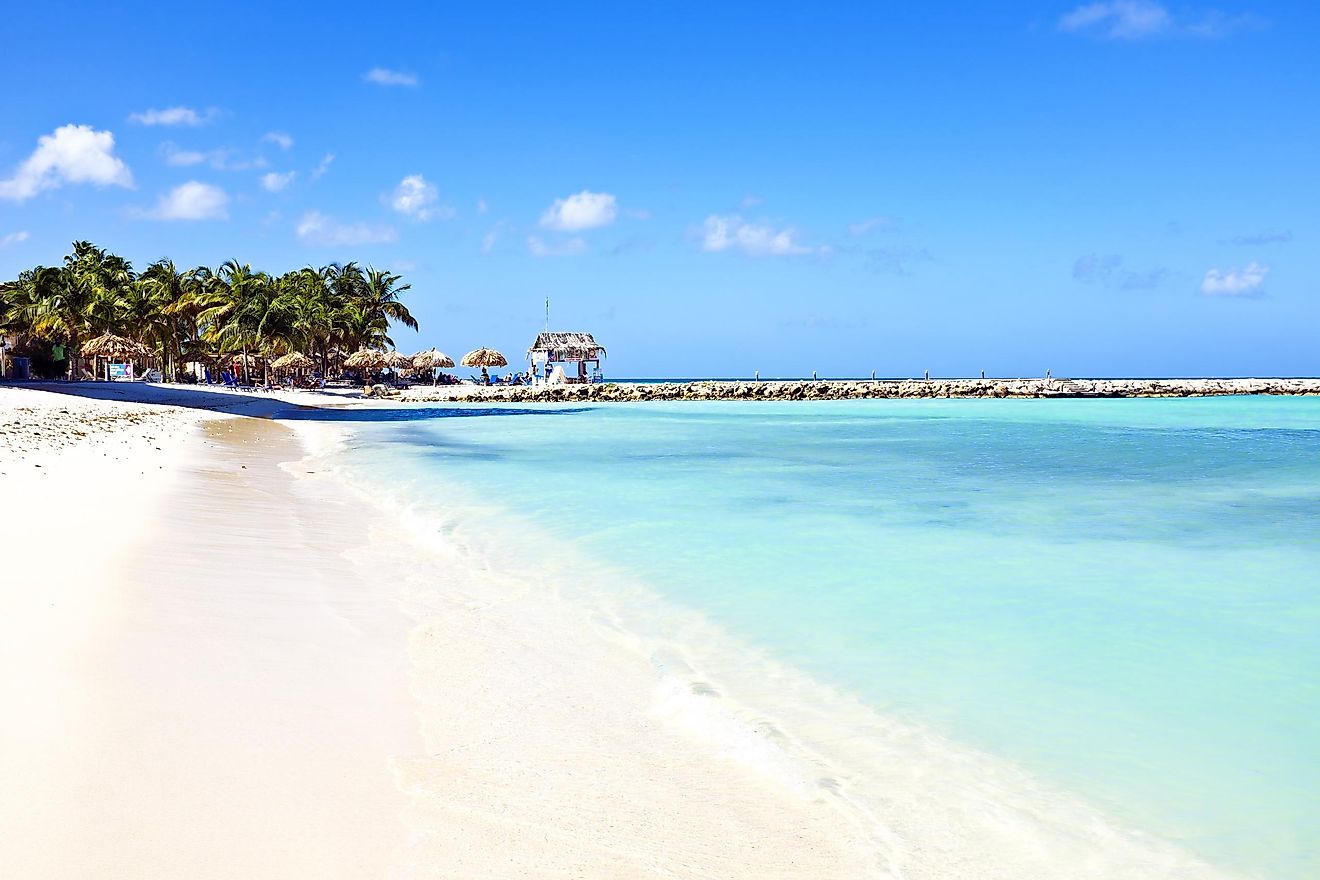The Economy of Aruba

Aruba is situated in the Southern Caribbean Sea, 15 miles from Venezuela’s coast. It is 18.6 miles long, and it is a constituent state of the Kingdom of the Netherlands. Its inhabitants are estimated to be 103,400 and are referred to as Arubans or Dutch. The island’s capital and largest city is Oranjestad which is home to an estimated 34,980 inhabitants.
The currency in circulation in the country is the Aruban florin, which is pegged at $1.79. The GDP was approximated at $2.516 billion in 2009 and the estimated GDP per capita was $25,300 in 2011. The country has a small open economy dominated by the service sector. Tourism, financial, hospitality, business, and petroleum bunkering are among the major service industries. The services sector contributes over 60% to Aruba’s economy. Industry and agriculture contribute an estimated 33.3% and 0.4% respectively to the GDP. Aruba’s unemployment rate is estimated to be 6.9%.
Tourism
Aruba first prospered economically because of the oil refinery industry. It was home to the Lago Refinery, which until its closure in 1985 was one of the world’s largest oil refineries. The island’s government then decided to utilize the country’s strategic position on the beachfront to establish a tourism sector. The country has a tropical semi-arid climate which translates to plenty of sunshine throughout the year. In 1959, Aruba’s first luxury hotel was constructed setting the pace for luxury real estate. In recent times, the island has witnessed a rapid growth in the establishment of hotels and facilities which have attracted an increasing number of ship arrivals and flights. More than 1 million tourists arrive in Aruba annually, most of them from North and South America. Although the growth in the tourism sector has been impressive, the government is trying to encourage growth in other areas including communications and finance to reduce the dependency on tourism.
Exports and Imports
Aruba is more of an importer than an exporter, especially for capital and consumer goods. In 2014, the country imported goods worth $1.528 billion compared to the $312.7 million in exports. The major exports are transport and electrical equipment, art and collectibles, animal products, machinery, and live animals. The primary export partners are the Caribbean Netherlands, the Netherlands, Colombia, Venezuela, the US, and Canada. Foodstuffs, electrical equipment, chemicals, refined oil, and machinery make up the bulk of the nation’s imports. The United States supplies 50.8% of the island’s imports followed by the Netherlands at 12.1% and the UK at 7.5%.
Future Trends
As it stands, tourism accounts for 30% of the state’s income. The government has attempted to reduce this dependency through measures such as instituting a moratorium on new hotel construction. The island’s economy is expected to lean towards diversification in a bid to reduce the impact of future slumps in tourism. Among the businesses targeted in diversification are technology, communications, and finance. The government aims to make Aruba more self-reliant, and it is projected that the island is on course to be ranked as one of the most prosperous Caribbean Islands.







